Maximize Pool Health: Essential Guide to Stabilizers
June 23th, 2024
June 23th, 2024
Beneath the shimmering surface of a well-maintained pool lies a delicate balance of chemical harmony. Anyone who has woken up to a cloudy pool knows the frustration of vanishing chlorine levels, especially under the relentless summer sun. Chlorine, the backbone of pool sanitation, is notorious for its volatility when exposed to UV rays. Without a guardian, it rapidly dissipates, leaving your aquatic oasis vulnerable to bacteria and algae intrusions.
Enter the unsung hero of pool maintenance: the stabilizer. Also known as cyanuric acid, this compound acts as a sunscreen for chlorine, ensuring its longevity. Growing up, my family always used to battle with unpredictable chlorine dips, until a seasoned neighbor introduced us to stabilizers. I vividly remember the relief of seeing a consistently clear pool, week after week, thanks to this simple yet effective addition.
Understanding the role of a pool stabilizer can transform your pool care routine. It saves time, minimizes chemical expenditure, and most importantly, protects what matters—your family’s health and the pool’s pristine condition. By moderating the chemical environment, you can enjoy uninterrupted swimming sessions, all while maintaining peace of mind. Let’s unravel the workings of pool stabilizers, exploring their application and benefits, ensuring your pool remains a sparkling retreat throughout the season.
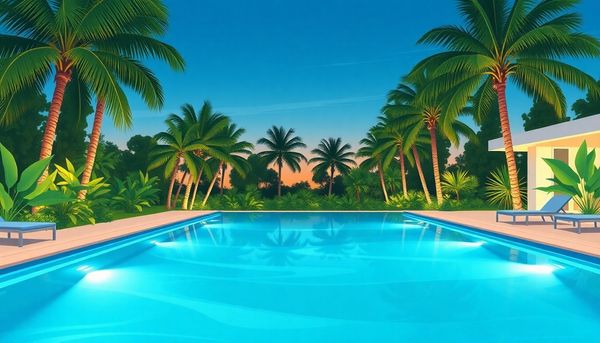
Chlorine's arch-nemesis in any outdoor pool is the relentless UV rays of the sun. Imagine your pool's chlorine evaporating into thin air, unable to fight the bacteria and algae lurking beneath the surface. Enter pool stabilizer, a clever ally that shields chlorine from the sun, keeping it effective and long-lasting. Known as Cyanuric Acid (CYA) in scientific circles, this chemical marvel comes in both liquid and granular forms, and is often found combined in chlorine tablets or shock products.
Incorporating stabilizer is relatively straightforward, but it requires a mindful approach. If you're using stabilized chlorine products, additional stabilizer is usually unnecessary. Adding too much can lead to a buildup known as "creep," which can hinder the disinfecting powers of chlorine rather than enhance it. It’s a delicate balance; too much stabilizer can be as problematic as too little.
Before you adjust your stabilizer levels, a little detective work is needed. You can measure the CYA level in your pool using test strips or a liquid test kit. A good rule of thumb is to maintain stabilizer levels around 30 to 50 ppm. This ensures a good balance between chlorine lifespan and sanitizing efficiency. Should your levels rise too high, the solution often involves draining a portion of your pool's water and replacing it with fresh water.
In essence, while pool stabilizer is a game-changer in maintaining chlorine levels, careful monitoring and moderation are key. Balancing your pool chemistry not only ensures sanitation but also prolongs the life of your pool infrastructure.
Stabilizers play an unsung yet pivotal role in the life of your pool's chlorine. This might sound like a tale of chemistry, but it's more about maximizing efficiency and savings. Think of pool stabilizers—often labeled as Cyanuric Acid—as your chlorine's trusty shield against the sun's relentless UV assault. Without this protection, the sun would swiftly deplete your chlorine, leaving your pool vulnerable to a host of unwanted guests like algae and bacteria.
Stabilizers work by forming a bond with chlorine molecules, effectively sheltering them from UV damage and prolonging their sanitizing power. This means that your chlorine has a longer lifespan, allowing it to maintain the pool's cleanliness without the need for constant replenishment.
However, as with most good things, moderation is key. Too much stabilizer can turn the tables, hindering chlorine's ability to sanitize effectively. Regular testing of your pool's Cyanuric Acid levels is crucial to avoid what pool enthusiasts call "creep"—the gradual buildup of stabilizer that can reduce chlorine's efficiency.
Incorporating stabilizers wisely keeps your pool chemistry balanced, saving you both time and money while ensuring your family swims in safe, sparkling water. Just like a good friend, stabilizers are there when you need them, but it's important to keep an eye on them to prevent any poolside drama.
Balancing your pool's stabilizer levels is like mastering a delicate dance. While adding stabilizer, also known as Cyanuric Acid (CYA), is essential to protecting your chlorine from the sun's relentless UV rays, too much can tip the scales in the wrong direction. Overstabilization is a common pitfall that can compromise your chlorine's ability to sanitize effectively. It's a bit like trying to hold onto a slippery bar of soap; too tight, and it slips away.
In my own pool, I noticed a creeping cloudiness despite regularly adding chlorine. A quick test revealed that my stabilizer levels were too high, reducing the chlorine's efficiency. Just like the analogy of a cup that's too full, the excess stabilizer diminished the chlorine's power to eliminate bacteria and algae effectively. This resulted in the pool becoming a breeding ground for unwanted guests.
To avoid such scenarios, regularly test your pool water using a reliable test kit or strips specifically designed for CYA analysis. Aiming for a stabilizer concentration of no more than 50 ppm ensures that you maintain a healthy balance, allowing chlorine to do its job without restraint. Should levels escalate, draining a portion of the pool and refilling with fresh water can bring them back in line.
By monitoring and adjusting your pool's chemistry, you can prevent overstabilization and maintain a pristine swimming environment. Embrace this diligent approach, and your chlorine will consistently shine at its best, safeguarding your water throughout the swim season.
Sunlit afternoons by the pool are a summer dream, but without proper care, your chlorine might vanish under the relentless glare of UV rays. The secret to extending its presence is not hiding your pool but introducing a reliable ally: pool stabilizer. Imagine this compound, often referred to as Cyanuric Acid, as a shield that binds with chlorite ions, guarding your precious chlorine from the sun's grasp and allowing it to last up to five times longer.
This kind of sorcery doesn’t come without its own rules. Like any good thing, moderation is key. Overuse can lead to "creep," where stabilizer levels climb too high, undermining chlorine’s sanitizing strength. From personal experience, I underestimated this once and ended up with an algae party I didn’t invite. Lesson learned: regular water testing is non-negotiable.
Aiming for a stabilizer level around 50 ppm is a sweet spot. It maximizes UV protection without compromising chlorine’s effectiveness. Keeping your chlorine at about 7.5% of your stabilizer level ensures your pool stays sparkling and safe for swimming. For instance, with a stabilizer level of 50 ppm, your chlorine should hover around 3-4 ppm.
Remember, balance is your best friend in pool chemistry. By maintaining these optimal levels, you’re not just protecting your chlorine—you’re safeguarding the joy of clear, clean water for every swim. So grab those test strips, keep an eye on the mix, and enjoy your pool without the worry of unwelcome green guests.
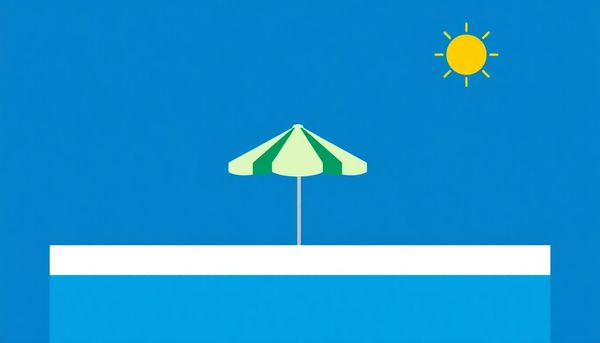
Maintaining the perfect chemical balance in your pool is much like mastering a delicate dance, where each step requires precision and timing. One misstep, and the harmony can falter. A key partner in this dance is your pool chemistry, which hinges significantly on the use of stabilizers to protect your chlorine levels.
Consider the role of Cyanuric Acid (CYA), often referred to as pool stabilizer, in this intricate choreography. Its primary function is to shield chlorine from the harsh, unrelenting UV rays that threaten to deplete it faster than it can sanitize your pool. This protection prolongs the active life of chlorine, ensuring it remains effective long enough to keep your water clean and safe. However, the relationship between chlorine and stabilizer is a double-edged sword. While stabilizer is crucial, an excess can lead to a condition known as "chlorine lock," where the chlorine is present but ineffective.
Managing this balance involves regular testing of your pool's CYA levels. Aim for an ideal range of 30-50 ppm, as anything above this can diminish chlorine's ability to combat algae and bacteria effectively. Keep a vigilant eye on your chemical levels with weekly tests, adjusting as necessary to maintain optimal conditions. Remember, when using stabilized chlorine products, your stabilizer levels can gradually increase, so adjustments might involve periodic dilution by adding fresh water to your pool.
Ultimately, optimizing pool chemistry is about finding that sweet spot where chlorine and stabilizer work in concert. With regular monitoring and adjustments, your pool can remain a refreshing refuge, free from the unpleasant surprises of chemical imbalance.
Chlorine is the unsung hero of pool maintenance, vanquishing harmful bacteria and keeping your water pristine. Yet, just as you wouldn’t leave a sunblock bottle open under the sun, you shouldn’t expose chlorine to the relentless UV rays without a protective layer. Enter pool stabilizers, the secret weapon in your chemical arsenal that ensures your chlorine sticks around long enough to do its job.
Understanding the intricacies of using stabilizers effectively begins with choosing the right form—be it liquid, granular, or integrated with chlorine products like trichlor tablets. Each option has unique advantages depending on your pool's needs. While it's tempting to think more is better, overuse can lead to the notorious "creep," where stabilizer levels build up, reducing chlorine's efficacy. Imagine trying to run a marathon with ankle weights—it's just not as effective.
Regular testing of Cyanuric Acid (CYA) levels is vital to prevent this. A friend once ignored this advice, thinking his pool was immune. A green lagoon later, he learned the hard way that stabilizer balance isn't just a suggestion—it's crucial. Adjusting water levels through dilution is the only remedy when levels climb too high, meaning you might need to drain and refill parts of your pool.
By maintaining a stabilizer level below 50 ppm, you ensure your chlorine works optimally, keeping algae and bacteria at bay. This small step can make all the difference, transforming pool care from a daunting chore to a manageable routine.
#
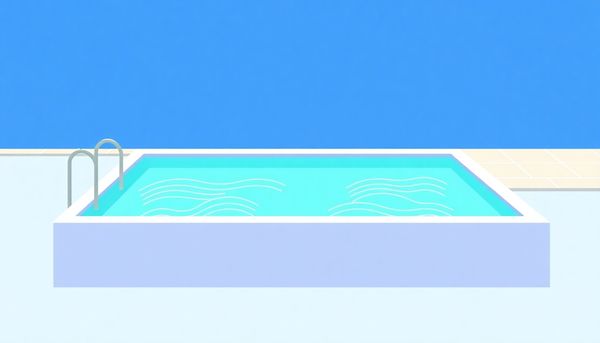
Sunshine might be a pool owner's best friend, but it doesn't play nice with chlorine. Those relentless UV rays can degrade chlorine faster than one might expect, leaving your pool vulnerable to bacteria and algae. This is where pool stabilizers, often referred to as cyanuric acid, step in as a protective shield for your chlorine. They bind with chlorite ions to prevent their premature evaporation under the sun's intensity.
Finding the right balance of stabilizer is crucial. While it's tempting to dump in more to ensure long-lasting chlorine, moderation is key. Excessive stabilizer levels can lead to "creep," which not only diminishes chlorine's disinfecting ability but may also encourage algae growth. Imagine adding stabilizer akin to seasoning a dish: enough to enhance, but not overpower.
Regular testing of your pool's cyanuric acid (CYA) levels using test strips or kits is invaluable. If you discover levels inching beyond the ideal 50 ppm, it might be necessary to dilute your pool water—exchange some of that over-stabilized water with fresh. This adjustment ensures your pool’s chemistry remains balanced, preserving both its cleanliness and swimmer safety.
Incorporating stabilizers into your pool maintenance routine effectively can save time and money. It allows for a more predictable and efficient use of chlorine, meaning fewer trips to the store and more sunny afternoons spent enjoying crystal-clear water.
Understanding the balance of cyanuric acid (CYA) in your pool can feel like mastering a delicate dance. Too little leaves your chlorine vulnerable to the sun's relentless rays, while too much can render your sanitizer sluggish. Striking the right balance begins with regular testing. Picture yourself armed with a reliable testing kit or trusty strips, dipping into the water to get an accurate reading of your CYA levels. This routine, akin to a weekly ritual, ensures you’re on top of any creeping stabilizer levels before they become a nuisance.
Consider the scenario of a friend who recently faced a spike in CYA levels. She discovered the culprit was her continued use of stabilized chlorine tablets. The solution? Transitioning to liquid chlorine, which gave her more control while keeping an eye on chlorine levels. Sometimes, a simple change in routine can prevent an issue from escalating.
To proactively manage CYA levels, dilution can be your ally. A timely top-off with fresh water might be just what's needed to push those levels back into the optimal range. Don't forget that testing your water chemistry regularly, even when using non-stabilized products, remains crucial. You’ll thank yourself later when you avoid the hassle of a more complicated adjustment.
Should the need arise to adjust your stabilizer levels, remember the gentle approach of dissolving CYA in a bucket of water away from pool surfaces. This not only protects your investment but also ensures a uniform distribution throughout the pool. Managing these levels isn't just about chemical balance; it's about making pool maintenance manageable and enjoyable.
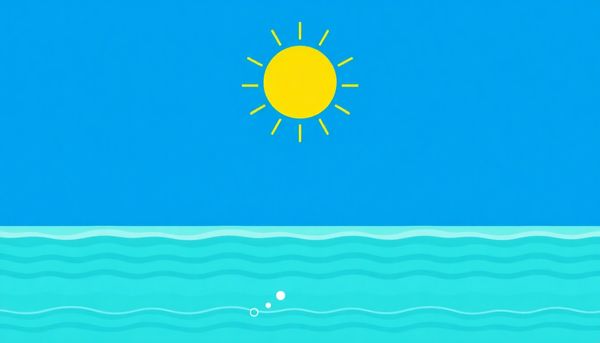
Maintaining the delicate dance between chlorine and stabilizer in your pool is akin to keeping a seesaw perfectly balanced. Too much stabilizer, and your chlorine loses its edge; too little, and the sun's relentless UV rays whisk it away. Understanding the synergy between these two elements is key to maintaining a sparkling pool.
Chlorine does the heavy lifting, sanitizing your pool by neutralizing harmful bacteria and algae. In the background, the stabilizer, often referred to as Cyanuric Acid (CYA), acts like a shield, protecting your chlorine from the sun's bleaching effect. This partnership extends the lifespan of the chlorine, ensuring it remains effective for longer. Stray too far on either side, and you could end up with a chlorine inefficiency, potentially leading to murky waters or even an algae bloom.
To achieve this harmony, it's crucial to regularly measure your CYA levels. This isn't just a one-time task; it needs to be part of your routine maintenance. Test kits or strips designed specifically for CYA are your best allies here. Aim to maintain a CYA concentration no higher than 50 ppm. This sweet spot ensures optimal chlorine efficiency without overloading your pool with excess stabilizer.
Should your stabilizer levels inch upwards, the solution involves a bit of pool water management—draining a portion of the water and replenishing it with fresh water. This not only helps reset your stabilizer but also refreshes the overall water chemistry. Regular monitoring and adjustments will keep your pool in a state of perfect balance, ready for a summer full of safe, refreshing swims.
Chlorine's battle against the sun is relentless. Imagine pouring a glass of water onto hot pavement—gone in seconds. This is much like what happens to chlorine in your pool under the sun's unforgiving glare. But fear not; Cyanuric Acid (CYA), the unsung hero of pool maintenance, steps in to shield your chlorine from rapid evaporation, ensuring it remains effective for far longer.
CYA acts like sunscreen for chlorine, binding to the chlorine molecules and protecting them from UV degradation. This means your pool stays cleaner for longer, saving you the hassle and expense of frequent chlorine additions. Available in both liquid and granular forms, CYA is also found in stabilized chlorine products like trichlor tablets and dichlor shock, making it easy to integrate into your pool care routine.
However, too much of a good thing can turn sour. Overuse leads to a phenomenon known as "creep," where stabilizer levels rise to the point of diminishing chlorine's effectiveness. It's akin to wearing sunglasses indoors—unnecessary and counterproductive. Regular testing of your pool's CYA levels with test strips or kits is crucial. Aim for a sweet spot around 30-50 ppm for optimal performance.
Remember, achieving balance is key. Keep an eye on your chemical levels, and your chlorine will thank you by keeping your pool sparkling and safe, without you constantly reaching for the chlorine bottle.
Keeping a vigilant eye on your pool's cyanuric acid (CYA) levels isn't just a good practice—it's essential for pool health. Think of it like keeping tabs on your pantry to ensure everything needed for a delicious, hassle-free dinner is at hand. CYA acts as sunscreen for your chlorine, shielding it from the sun's rays and prolonging its effectiveness, yet too much can backfire, making your sanitizers less effective and potentially inviting unwanted guests like algae and bacteria.
Regular testing is your best friend in this balancing act. Use reliable test kits or strips to measure the CYA level, aiming for that sweet spot of 30 to 50 ppm. Testing shouldn't feel like a chore but more like a quick pit stop that ensures your pool is running smoothly. It only takes a couple of minutes and can save you from hours of troubleshooting later.
Over time, CYA levels can creep up, especially if you're using stabilized chlorine products. My neighbor once ignored rising CYA levels, thinking they'd stabilize on their own, and ended up with a pool that resembled a swamp. To prevent this, swap in non-stabilized chlorine when necessary and dilute with fresh water if levels soar.
Keeping your CYA in check not only optimizes chlorine efficiency but also maintains a sparkling, inviting pool ready for summer fun. It's a small step with a big payoff, keeping your backyard oasis a true retreat.
In the world of pool care, stabilizer creep is the silent invader, slowly tipping the scales against your pool’s pristine balance. Imagine spending a lazy afternoon lounging by the pool, only to realize that despite your diligent chlorine applications, your pool water isn't as sparkling or inviting as it should be. This invisible foe, when left unchecked, can render your sanitizer almost powerless, transforming your pool from a refreshing oasis to a breeding ground for unwanted guests like bacteria and algae.
Stabilizer creep occurs when the concentration of Cyanuric Acid (CYA) in your pool rises above its optimal threshold, usually due to the continuous use of stabilized chlorine products. As CYA levels climb, the effectiveness of chlorine diminishes, akin to a knight in shining armor being weighed down by an unnecessary burden. To keep this from happening, a keen eye on regular water testing is essential. Consider it your pool’s health check-up, ensuring stabilizer levels remain below the 50 ppm mark.
If you find stabilizer levels inching upwards, some decisive action is needed. Draining a portion of the pool water and replenishing it with fresh water can help reset the balance. Alternatively, switching to non-stabilized chlorine options temporarily can halt the rise in CYA, giving you a breather to manage existing levels. With a proactive approach, stabilizer creep can be managed effectively, ensuring that the only thing invading your pool is sunshine and laughter.

The battle between the sun and your pool’s chlorine is a relentless one, with ultraviolet rays eager to deplete your sanitizer before it even begins its job. To level the playing field, the addition of pool stabilizer becomes crucial. Known by various names—pool conditioner, chlorine stabilizer, or cyanuric acid—this chemical acts as a sunscreen for chlorine, shielding it from the sun's harsh effects.
Pool stabilizer's magic lies in its ability to bind to the chlorite ions, preventing them from being broken apart by UV rays. This means your chlorine remains effective for a longer duration, reducing the frequency of additions and thereby saving time and resources. However, a word of caution: adding too much stabilizer can lead to a phenomenon known as "creep," where the stabilizer accumulates to levels that can hinder the chlorine's efficacy.
To avoid this, regular testing of your pool’s cyanuric acid (CYA) levels is essential. Using test strips, a liquid test kit, or even a trip to your local pool supply store can keep you informed. Ideally, maintain your stabilizer levels at around 50 ppm. Higher levels don’t offer increased UV protection but can increase the risk of bacteria and algae growth.
For those who might find chemical balancing daunting, remember that small, consistent adjustments are more effective than drastic changes. The key is balance—ensuring your chlorine remains active while keeping stabilizer levels in check. Your pool will thank you, and so will your wallet.
Opening a conversation about pool stabilizers feels a bit like uncovering a secret ingredient in a well-loved recipe. The sun's UV rays are notorious for gobbling up chlorine faster than you can say "summer swim," but the solution isn't as simple as tossing stabilizer into your pool and calling it a day. This versatile pool additive, known by its scientific alias Cyanuric Acid, is a game-changer when used properly, but it requires a bit of finesse.
First, consider the forms in which stabilizers are available: liquid, granular, or blended within chlorine tablets and shocks. If you’re already using stabilized chlorine products, chances are, you’re introducing stabilizer without even knowing it. However, overzealous application can lead to a condition humorously referred to as "creep," where the levels become problematic rather than helpful. Personally, I've found that testing weekly with CYA-specific strips keeps this in check, especially during peak swimming season.
When it comes to maintaining that sweet spot for pool stabilizer, think moderation. Aim for a concentration under 50 ppm to dodge inefficiencies in chlorine performance and the unwanted company of algae. Regular water testing is your trusty sidekick here, helping prevent any unpleasant surprises. If levels rise too high, a good old-fashioned drain-and-refill can dial it back down. Remember, like balancing spices in a meal, a pool stabilizer needs the right amount to keep your chlorine working its magic efficiently without overshadowing its effectiveness.
Understanding the role of CYA, or Cyanuric Acid, in your pool is crucial for ensuring your chlorine remains effective. You've decided to keep your pool pristine, but how often do you pause to consider the fine balance of chemicals that make it all possible? As a pool owner, you’re probably familiar with the sight of chemical test kits. Among the various tests, keeping an eye on CYA levels is one of the most important.
You start by testing your water’s current CYA concentration. Whether you choose test strips, a liquid test kit, or prefer the precision of professionals at your local pool store, knowing your baseline is essential. When I first started managing my pool, I relied on test strips. While convenient, they taught me that regular testing is non-negotiable—more so after a particularly hot week left my chlorine levels unexpectedly low.
Once you've established your CYA level, adjustments might be necessary. If your levels are creeping higher than the ideal 30-50 ppm range, consider replacing a portion of your pool water. This dilution can effectively lower CYA concentration without compromising the delicate chemistry of your pool. Remember, while stabilizers help preserve chlorine under the sun, excess CYA diminishes its bacteria-killing efficiency.
Switch to non-stabilized chlorine products if needed, and always keep your pool's chemistry in check. Adjusting CYA is more than just numbers; it's about maintaining a refreshing, safe swimming environment for everyone.
Navigating the world of pool chemistry can sometimes feel like walking a tightrope, especially when it comes to the balance between using enough stabilizer to protect your chlorine and avoiding the perils of overstabilization. While stabilizers are essential in shielding your chlorine from the sun's relentless UV rays, adding too much can ironically undermine your efforts, leading to what experts call "chlorine lock." This occurs when stabilizer levels become so high that they actually inhibit chlorine’s ability to sanitize effectively, turning a helpful ally into a sneaky saboteur.
Years ago, I learned this the hard way with my own backyard pool. After noticing that the water seemed a bit lackluster despite frequent chlorination, I discovered my stabilizer levels had quietly crept up well beyond the ideal range. Not only did the algae have a field day, but I also found myself back to square one, draining and refilling a portion of my pool to restore balance—an endeavor that, while educational, was far from convenient.
To sidestep similar woes, keep your stabilizer in check by regularly testing your CYA levels. Aim for a sweet spot typically between 30 to 50 ppm, which ensures your chlorine remains hard at work without being shackled by its own protector. If you notice levels climbing higher, a simple solution is to switch to non-stabilized chlorine until things stabilize. Remember, in pool care, as in life, moderation is key.

In the world of pool maintenance, stabilizer creep is a sneaky little foe. Unlike the big splash of adding chemicals, it quietly accumulates, potentially undermining all your well-laid plans for a crystal-clear pool. Over time, as you introduce stabilized chlorine products, such as trichlor tablets or dichlor shock, the stabilizer levels in your pool can gradually increase. This isn’t immediately obvious because stabilizer, or Cyanuric Acid (CYA), doesn’t dissipate. Instead, it lingers, clutching onto the chlorine to protect it from the sun’s harsh UV rays.
A personal anecdote might help illustrate this. My neighbor, an avid pool enthusiast, once found herself battling stubborn algae blooms. Despite her best efforts, she couldn’t figure out why her chlorine levels seemed ineffective. After some testing, she discovered her CYA levels had crept well over 100 ppm, drastically reducing the chlorine's ability to sanitize effectively. She had to partially drain her pool and refill it—a costly mistake that could have been avoided with regular monitoring.
To manage stabilizer creep, frequent testing is your ally. Invest in a reliable test kit or strips capable of measuring CYA levels. If you notice them inching too high, consider switching to non-stabilized chlorine options temporarily. This proactive approach can save you from a larger hassle down the line, keeping your pool both enjoyable and safe for swimming.
Understanding the delicate balance of pool chemistry can be daunting, but establishing a stabilizer-testing routine provides a crucial defense against the sun's insatiable appetite for chlorine. For those who cherish their backyard oasis and wish to maintain it with minimal fuss, this routine becomes as essential as sunscreen on a summer day.
Begin by knowing your pool's volume, the starting point for any chemical calibration. Armed with this knowledge, select a reliable testing method. Whether you choose test strips or a liquid kit, ensure it specifically measures Cyanuric Acid (CYA) levels. This acid acts like a shield for your chlorine, but too high a concentration can backfire, diminishing its sanitizing power.
Once you've established a baseline with your initial test, regular monitoring is key. A weekly routine is typically sufficient, but after heavy use or a significant rainfall, additional checks might be necessary. If during testing you find CYA levels creeping above the recommended 50 ppm, consider topping off your pool with fresh water to dilute the concentration, or swap to non-stabilized chlorine for a period. This simple act can bring your pool chemistry back into balance without complicated interventions.
Remember, consistency is your greatest ally in maintaining an inviting pool environment. By sticking to this stabilizer-testing regimen, you not only preserve chlorine effectiveness but also extend the life of your pool equipment. In doing so, you ensure your pool remains a haven for relaxation and fun under the sun.
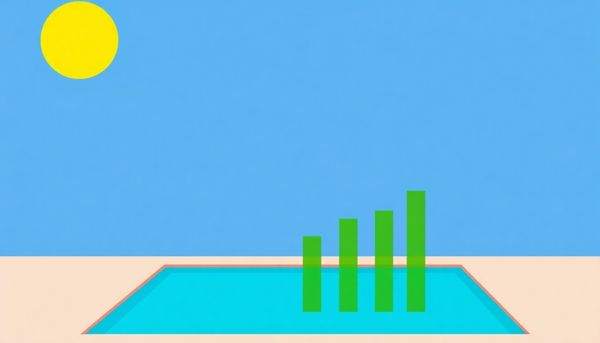
This article provided insights into maintaining your pool. Start your pool care journey today!
Want to become a pool maintenance expert? Our free Pool School course covers everything you need to know about pool care. From basic maintenance to advanced troubleshooting, you'll learn how to:
Join over 10,000 pool owners who have already transformed their pool care routine. Get started with our free Pool School course today!